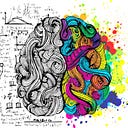Member-only story
Andreas Vesalius: Father of Modern Human Anatomy
Andreas Vesalius is the author of one of the most influential books in the history of medicine. His studies have revolutionized, changing our understanding of human anatomy.

Andreas Vesalius (1514–1564) was born into a family of doctors in Brussels, Belgium. In his childhood, he showed great interest in dissecting animals, a hobby that kept his peers away. However, he persisted in pursuing his passion and studied medicine at the Catholic University of Leuven and the University of Paris. These are two of the largest anatomical research centers of that time.
After graduating, Vesalius joined the teaching work at the University of Padua and later became the private doctor of the Roman Emperor Karl V. Unlike those who taught him before, he always wanted to perform the surgery and encouraged his students to do the same.
After comparing the results of directly conducting surgery with what he read in contemporary textbooks, Vesalius asserted that direct observations on the human body were much more reliable than theory. He denied more than 200 lectures by Galen, the famous Roman physician and surgeon who lived in the second century. For example, Vesalius pointed out that Galen erroneously asserted that a human jaw is composed of two bones.
So how could a man with lectures spanning 1,300 years make such an elementary mistake? Some of Vesalius’s contemporaries stood in favor of Galen, arguing that the structure of the human body may have changed over the generations. But Vesalius knew the real answer: Ancient Roman customs forbid the act of dissecting the human body. This forced Galen to perform surgery on other animals such as pigs, gibbons and dogs. If we were to mention a dog’s jaw, Galen’s claim is correct.
Of course, Vesalius knew that Galen was often right rather than wrong, and he was often amazed by the vast knowledge of his predecessor who lived in ancient times. For example, Galen tested it on a pig’s spinal cord. Galen discovered that if the spinal cord is cut near the tail end, the animal will lose the ability to use the hindlegs. With another cut near the head, the forelegs will stop moving or even the animal stops…
